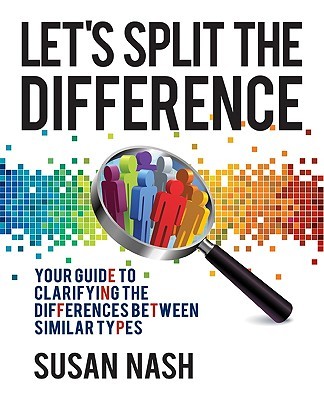
- We will send in 10–14 business days.
- Author: Susan Nash
- Publisher: Em-Power Inc.
- ISBN-10: 0956327907
- ISBN-13: 9780956327901
- Format: 19.1 x 23.5 x 1.1 cm, minkšti viršeliai
- Language: English
- SAVE -10% with code: EXTRA
Reviews
Description
This book has been designed as a resource for trainers, consultants, coaches, and leaders to help individuals assess their best-fit type, and thereby have greater access to their innate talents. Every year, many thousands of people use the knowledge of psychological type (as described initially by Carl Jung in 1921) to raise individual awareness, increase leadership effectiveness, build team cohesiveness and provide support to the coaching process. Most people access these concepts using an assessment tool called the Myers-Briggs Type Indicator(R) (MBTI(R)) which provides a "four-letter Type" (E/I, S/N, T/F, J/P) that describes an individuals preferred way of gathering information and making decisions. Often individuals struggle with selecting their "best-fit" type using only this assessment tool because of the difficulties in distinguishing between innate and learned behaviours. To help in the sorting process, it is helpful to use the four lenses of type: -Function-attitudes: what are the information gathering and decision making preferences? -Hierarchy of functions: how do these cognitive processes manifest for your personality type? -Temperament: what are your core needs and what pattern of values, talents and behaviors do you identify with? -Interaction Styles: how do you engage with others to get your core needs met and what pattern of aims, beliefs, energy and appearance do you most identify with? This book includes: -An overview of the four lenses of type -Comparisons between different types -Resource guide for further information
- Author: Susan Nash
- Publisher: Em-Power Inc.
- ISBN-10: 0956327907
- ISBN-13: 9780956327901
- Format: 19.1 x 23.5 x 1.1 cm, minkšti viršeliai
- Language: English English
This book has been designed as a resource for trainers, consultants, coaches, and leaders to help individuals assess their best-fit type, and thereby have greater access to their innate talents. Every year, many thousands of people use the knowledge of psychological type (as described initially by Carl Jung in 1921) to raise individual awareness, increase leadership effectiveness, build team cohesiveness and provide support to the coaching process. Most people access these concepts using an assessment tool called the Myers-Briggs Type Indicator(R) (MBTI(R)) which provides a "four-letter Type" (E/I, S/N, T/F, J/P) that describes an individuals preferred way of gathering information and making decisions. Often individuals struggle with selecting their "best-fit" type using only this assessment tool because of the difficulties in distinguishing between innate and learned behaviours. To help in the sorting process, it is helpful to use the four lenses of type: -Function-attitudes: what are the information gathering and decision making preferences? -Hierarchy of functions: how do these cognitive processes manifest for your personality type? -Temperament: what are your core needs and what pattern of values, talents and behaviors do you identify with? -Interaction Styles: how do you engage with others to get your core needs met and what pattern of aims, beliefs, energy and appearance do you most identify with? This book includes: -An overview of the four lenses of type -Comparisons between different types -Resource guide for further information


Reviews